Q
What Is Jaecoo J7? Here's a Full Introduction for You
The Jaecoo J7 is a C-segment vehicle, available in the 2024 fuel-powered version (including 2WD and AWD) and the 2025 PHEV version. The fuel-powered version is equipped with a 1.6L turbocharged engine, with a maximum power of 145kW and a maximum torque of 290N·m. It is paired with a 7-speed dual-clutch transmission. The official 0 - 100km/h acceleration times are 9.9 seconds (2WD) and 9.2 seconds (AWD), and the combined fuel consumption figures are 7L/100km (2WD) and 7.7L/100km (AWD). The prices are RM 138,800 (2WD) and RM 148,800 (AWD).
The PHEV version combines a 1.5T turbocharged engine with an electric motor. The system's combined power is 255kW, and the combined torque is 525N·m. It has an all-electric range of 106 kilometers and is priced at RM 158,800.
The vehicle is 4500mm long, 1865mm wide, and 1670mm (PHEV) or 1680mm (fuel-powered version) high, with a wheelbase of 2672mm. It features a rugged exterior. Inside, there's a 10.25-inch instrument cluster and a 13.2-inch (fuel-powered 2WD) or 14.8-inch (fuel-powered AWD and PHEV) center console display. It's also equipped with a Sony audio system and other features. The safety configuration is comprehensive, including ABS, vehicle stability control, and so on.
Special Disclaimer: This content is published by users and does not represent the views or position of PCauto.
Related Q&A
Q
Does the Jaecoo J7 have memory seats?
As an SUV targeting the high - end market, the Jaecoo J7 is indeed equipped with a memory seat function. This configuration can store the preferred settings such as seat positions and rear - view mirror angles of different drivers, making it convenient for quick adjustment when multiple people take turns driving. It is especially suitable for family users or business scenarios. In Malaysia's hot weather, its comfort can be further enhanced when combined with the ventilated seat function.
Memory seats are usually linked with configurations such as electric adjustment and lumbar support, which is a common technology in luxury cars. High - end versions of competing models in the same class, such as the Honda CR - V and Toyota RAV4, also offer similar functions. It should be noted that there may be differences between different model years or configuration versions. It is recommended that consumers check the specific configuration list on the official Jaecoo Malaysia website before purchasing or visit an authorized dealer to experience the actual vehicle functions.
This kind of intelligent configuration is gradually being introduced from luxury cars to mainstream models, reflecting the digital development trend of the automotive industry. In the future, more advanced technologies such as facial recognition or remote preset via mobile apps may be integrated.
Q
What fuel does the Jaecoo J7 use?
As an SUV targeting young urban families, the Jaecoo J7 in the Malaysian market uses RON95 gasoline, which is the most common fuel type locally. It fully meets the infrastructure of Malaysian gas stations and driving needs. The 1.6TGDI turbocharged engine equipped in this model has been specifically tuned to fully leverage the anti - knock characteristics of RON95 gasoline. It not only ensures a power output of 156 horsepower but also takes fuel economy into account, making it very suitable for Malaysia's hilly terrain and congested urban roads.
It's worth mentioning that although RON97 gasoline can theoretically bring smoother combustion efficiency, considering the Malaysian government's continuous subsidy policy for RON95 and the limited difference in actual driving experience between the two, using RON95 is undoubtedly a more cost - effective choice. For Malaysian consumers who care about car - maintenance costs, regularly using the fuel additives recommended by the original manufacturer can effectively keep the fuel injectors clean. This kind of maintenance method is more cost - effective than blindly pursuing high - octane fuel.
In addition, Malaysia's hot and humid climate poses a challenge to the fuel system. It is recommended that car owners choose gas stations with a good reputation as much as possible to avoid poor - quality gasoline with excessive moisture content, which may affect the engine's lifespan.
Q
What is the towing capacity of the Jaecoo J7?
As an SUV designed mainly for urban light off - road driving, the towing capacity of the Jaecoo J7 needs to be evaluated in combination with its power and body structure. Although the official hasn't released the specific data yet, referring to SUV models in the same class equipped with 1.6T turbocharged engines (such as the Chery Tiggo series), it is estimated that its towing capacity is between 1,200 and 1,500 kilograms. It is suitable for towing leisure equipment like small yachts, camping trailers, or motorcycles.
For Malaysian users, it's necessary to pay attention to the local regulations regarding vehicle towing. For example, in Peninsular Malaysia, the total weight of the trailer must not exceed 1.1 times the unladen weight of the towing vehicle, and a special hitch and braking system need to be installed. If you often have towing needs, it is recommended to upgrade the cooling system and regularly check the transmission oil temperature, as the tropical climate may increase the engine load.
In addition, the J7's intelligent four - wheel drive system and high - rigidity body design can improve towing stability. However, in actual operation, sudden acceleration or overloading on steep slopes should still be avoided to ensure safety. The towing data of other brands like Proton X90 or Toyota Fortuner can also be used as a horizontal reference, but ultimately, the information on the Jaecoo Malaysia official website or from dealers should be the final reference.
Q
What is auto start stop on Jaecoo J7?
The Auto Start-Stop function of the Jaecoo J7 is an energy-saving technology. When the vehicle stops briefly (such as waiting at a red light or in a traffic jam), the system will automatically shut down the engine to reduce fuel consumption and emissions. When the driver releases the brake or steps on the accelerator, the engine will quickly restart to ensure a smooth drive. This function is particularly suitable for the common urban traffic congestion in Malaysia. It can not only reduce fuel consumption but also decrease exhaust emissions, which is in line with the environmental protection trend.
It should be noted that the Auto Start-Stop function will automatically pause when the battery is low, the air - conditioning is operating at a high load, or the engine has not reached the operating temperature, to ensure driving comfort and vehicle performance. Similar technologies have been widely used in many brand models and have become one of the important means for modern cars to improve fuel economy. Drivers can manually turn off this function through a button, but long - term use can significantly save fuel costs, especially in busy traffic areas like Kuala Lumpur.
Q
What is the safety rating of the Jaecoo J7?
The Jaecoo J7 has a good safety performance. It comes standard with a host of safety features. For example, ABS anti - lock braking system and electronic stability control can enhance the vehicle's stability during emergency braking and on complex road conditions. The seat - belt reminder covers all seats, constantly reminding passengers and drivers to fasten their seat belts. Functions such as blind - spot monitoring, lane departure warning system, autonomous emergency braking/active safety system, and forward collision warning are helpful in detecting potential hazards in advance and avoiding collisions. The vehicle is also equipped with eight airbags, including those for the driver, front - passenger, front - side airbags, head airbags (curtains) for the front and rear rows, and knee airbags. These can effectively protect the people inside the vehicle in the event of a collision. In addition, the ISOFIX child - seat anchor points make it easy to install child seats, ensuring the safety of children in the car. Although there is no specific star - rated safety rating, these abundant safety features can provide reliable safety protection for passengers and drivers.
Q
Is the Jaecoo J7 water resistant?
As an SUV mainly targeting urban light off - roading, the water - proof performance of the Jaecoo J7 is mainly manifested in daily wading scenarios rather than professional diving. Official data shows that its wading depth can reach approximately 600mm, which is sufficient to handle the common rain - flooded roads in Malaysia. This is due to its optimized air intake position and chassis sealing design. However, it should be noted that long - term immersion may still cause damage to the electrical circuits.
For Malaysian consumers, when driving during the rainy season, more attention should be paid to the vehicle's water - proof performance and daily maintenance. For example, regularly check the door seals and chassis drain holes to prevent sand and mud from clogging and affecting the water - proof effect. At the same time, it is recommended to check the braking system in time after wading.
It's worth noting that the water - proof design of most city SUVs on the market is mainly for short - term wading. If you often encounter deep - water areas, you should consider modifying professional configurations such as a wading snorkel. However, this will involve changes to the warranty terms, and it is recommended to consult through official channels.
Q
What cars are similar to the Jaecoo J7?
As a luxury compact SUV, the Jaecoo J7's comparable models can be those in the same class with similar design styles, power configurations, and technological features. For example, the Chery Omoda 5, Proton X50, Haval Jolion, and Toyota Corolla Cross. These models all feature youthful designs, have similar body sizes (around 4.4 - 4.5 meters in length), offer turbo - charged engine options (such as 1.5T or 1.6T), and are equipped with intelligent connectivity systems and ADAS driving assistance features, making them suitable for the urban roads in Malaysia and family needs.
It's worth noting that the Jaecoo J7 stands out in its class with its emphasized "luxury" interior quality and unique exterior design. The Proton X50 has an edge in cost - effectiveness thanks to its local production and well - established after - sales network, while the Toyota Corolla Cross excels in brand reputation and hybrid technology.
If consumers prefer a higher ground clearance or a four - wheel drive version, they can also compare the Mitsubishi ASX or Mazda CX - 30, but the price may go up. It is recommended to take a test drive before purchasing a car. Pay special attention to the space comfort and warranty terms, as the tropical climate in Malaysia places high demands on the air - conditioning efficiency and the stability of the electronic system.
Q
Is Jaecoo J7 a 4x4?
The Jaecoo J7 isn't all 4x4 (four - wheel drive) models. This vehicle comes in multiple drivetrain versions. Among them, the Jaecoo J7 AWD version features four - wheel drive (4x4), which offers better passability and handling stability, making it suitable for dealing with complex road conditions. The Jaecoo J7 2WD version is front - wheel drive, mainly providing the power needed for daily city driving and may have an edge in fuel economy. Additionally, the Jaecoo J7 PHEV 2WD version is also front - wheel drive. It's a plug - in hybrid model, achieving a balance between power performance and energy conservation as well as environmental protection. Consumers can choose the appropriate Jaecoo J7 drivetrain version based on their actual needs, driving scenarios, budget and other factors.
Q
How many seats are in the Jaecoo J7?
As a new luxury intelligent SUV model, the Jaecoo J7 features a standard 5 - seat layout for its seating configuration. This can meet the daily travel or long - distance trip needs of most Malaysian families. The rear seats usually support proportional folding to flexibly expand the luggage space.
In terms of design, this car focuses on seating comfort. The seat materials may offer options like leather or high - grade fabric. Some versions may also be equipped with electric adjustment or heating functions to enhance the experience. For Malaysian consumers, a 5 - seat SUV is particularly practical for urban commuting and weekend self - driving tours. It can ensure sufficient seating space while avoiding the higher road tax costs associated with 7 - seat models.
In the same market segment, the 5 - seat layout is the mainstream choice. Models like the Honda CR - V and Toyota RAV4 adopt similar designs. However, the Jaecoo J7 strengthens its competitiveness through intelligent configurations and a luxurious feel. For example, it may be equipped with an immersive audio system or a panoramic sunroof. These details are quite appealing to Malaysian users who value a sense of technology and comfort.
If consumers need more seats, they can consider other 7 - seat models or MPVs under the brand.
Q
What size battery is in the Jaecoo J7?
As a newly launched SUV model in the Malaysian market, the Jaecoo J7 typically uses a mainstream 12V battery system. Specifically, the capacity might be a lead - acid battery ranging from 60Ah to 70Ah (the specific parameters should be subject to the official manual or dealer information). This type of battery can meet the daily starting and power supply needs of electronic devices.
The climate in Malaysia is hot and humid. It is recommended that car owners regularly check whether the battery electrodes are corroded and avoid long - term parking which may lead to battery discharge, so as to extend the battery life. If considering an upgrade in the future, enhanced batteries such as AGM or EFB can be selected. They are more heat - resistant and have better cyclic charging performance, but it is necessary to confirm the compatibility with the vehicle's electrical system.
In addition, some maintenance centers in Malaysia offer free battery testing services. Car owners can take advantage of these services to ensure that the vehicle's power system is in good condition.
Latest Q&A
Q
How big is the gas tank on a GR Corolla 2025?
The 2025 Toyota GR Corolla comes with a 50 - liter fuel tank. This high - performance hatchback is equipped with a 1.6 - liter three - cylinder turbocharged engine and paired with a full - time all - wheel drive system. While offering an excellent driving experience, the 50 - liter fuel tank capacity can also meet the needs of daily commuting and weekend getaways. For Malaysian consumers, the fuel tank design of the GR Corolla strikes a great balance between performance and practicality. Considering the common local driving conditions and the distribution of gas stations, this capacity can support a cruising range of approximately 400 - 500 kilometers (it specifically depends on driving habits and road conditions).
It's worth mentioning that as a model focused on the driving experience, the fuel tank position of the GR Corolla is specially designed to optimize the vehicle's weight distribution, which is also a common practice of Toyota's Gazoo Racing department when developing high - performance models. The hot and rainy climate in Malaysia places higher requirements on the fuel tank material. The GR Corolla uses anti - corrosion coatings and enhanced sealing designs to ensure safe and reliable operation in various environments. If you often drive long distances, it is recommended to regularly check the fuel tank and the oil circuit system, which is especially important in high - temperature and high - humidity environments.
Q
What kind of oil does a 2025 GR Corolla take?
As a high-performance vehicle, the 2025 GR Corolla is recommended to use fully synthetic oil that meets Toyota's original factory standards. The viscosity is typically 0W - 20 or 5W - 30. Specifically, refer to the owner's manual or the advice of local Toyota dealers in Malaysia, as the tropical climate may affect the oil selection. High-performance turbocharged engines have relatively high requirements for oil. Fully synthetic oil can provide better high-temperature protection and anti-wear performance. It is recommended to change the oil every 5,000 to 8,000 kilometers or every 6 months (whichever comes first). Owners in Malaysia need to pay attention to choosing oil with API SP or ILSAC GF - 6A certification. This type of oil is designed for modern engines and can effectively prevent low-speed pre-ignition problems. If you frequently drive aggressively or participate in track days, you can consider using higher-performance racing oil, but for daily use, the specifications recommended by the factory are sufficient. Regular oil changes are crucial for maintaining the performance of the GR Corolla's G16E - GTS 1.6T three-cylinder engine. Meanwhile, it is recommended to use the original factory oil filter to ensure the filtering effect.
Q
What is the difference between a 2025 and 2024 Corolla?
The main differences between the 2025 and 2024 Corolla models are concentrated on the optimization of technological features and the powertrain. The 2025 Corolla is expected to upgrade the Toyota Safety Sense intelligent driving safety system to version 3.0, adding more precise pre - collision warnings and full - speed range radar cruise control. It may also come with a larger center - console touchscreen and support wireless Apple CarPlay/Android Auto, while the 2024 model uses the 2.5 - version system and requires a wired connection.
In terms of power, the 2025 model might slightly improve the overall output efficiency of the 1.8L hybrid system, but it will keep the same 1.8L naturally - aspirated and 1.6L turbo options as the 2024 model. There are minor differences in appearance. The 2025 model may adjust the front grille design and wheel styles.
Malaysian customers should note that the locally - introduced versions may have their configurations adjusted according to market strategies. For example, Southeast Asian specifications often enhance the air - conditioning system and anti - rust treatment for the tropical climate.
As a globally best - selling model, the Corolla's annual iterations are usually based on steady improvements. If you have a limited budget and don't need the latest technology, the 2024 model still offers high cost - effectiveness. Consumers who pursue cutting - edge features can wait for the 2025 model to hit the market and then compare the actual differences between the two models.
Q
Why is the GR Corolla 2025 so special?
The 2025 GR Corolla is special because it inherits Toyota's high - performance genes from Gazoo Racing. It's equipped with a 1.6T three - cylinder turbocharged engine that can churn out over 300 horsepower. And it comes with the GR - Four all - wheel - drive system, which provides flexible power distribution, offering an exhilarating driving experience. It's especially suitable for Malaysia's winding mountain roads and race tracks.
This car also features a lightweight body and a sport - tuned suspension, ensuring precise handling. The limited - edition Morizo Edition further enhances its exclusivity. For Malaysian car enthusiasts, the GR Corolla is not just a high - performance hot hatch; it represents Toyota's commitment to pure driving pleasure. Its arrival allows those with limited budgets to experience the thrill similar to that of a rally car.
Moreover, it has great potential for modification. Given the strong local car - modifying culture, there's plenty of room for future upgrades. Whether it's for daily commuting or track days, the GR Corolla can handle it all. It's an ideal choice that combines practicality and performance.
Q
What is the top speed of the 2025 Toyota Corolla GR?
In 2025, the top speed of the Toyota Corolla GR is expected to reach approximately 225 to 235 kilometers per hour. The specific figures may vary due to different market tuning or configurations. This performance - oriented model is equipped with a 1.6 - liter three - cylinder turbocharged engine with a maximum power of about 300 horsepower. It also comes with the GR - Four all - wheel drive system and a 6 - speed manual or 8 - speed automatic transmission, offering drivers a precise handling experience.
For car enthusiasts in Malaysia, the Corolla GR not only inherits the practicality of the regular Corolla but also shows excellent dynamic performance on local winding roads or high - speed sections through its strengthened chassis, sporty suspension, and exclusive aerodynamic kits.
It's worth noting that high - performance hatchbacks need attention on heat dissipation and tire selection in hot climates. Regular maintenance is recommended to ensure the engine and cooling system are in optimal condition. Meanwhile, Malaysian owners can refer to the adaptation tuning suggestions provided by UMW Toyota. Usually, these models require higher - grade fuel to unleash their full potential.
View MoreRelated News
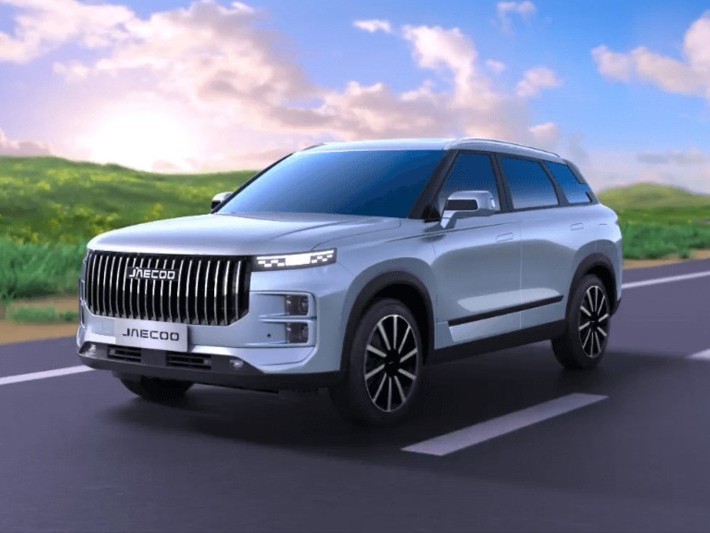
Jaecoo J7 Review: A Great-Value SUV That Delivers More Than Expected
AshleyJul 10, 2025
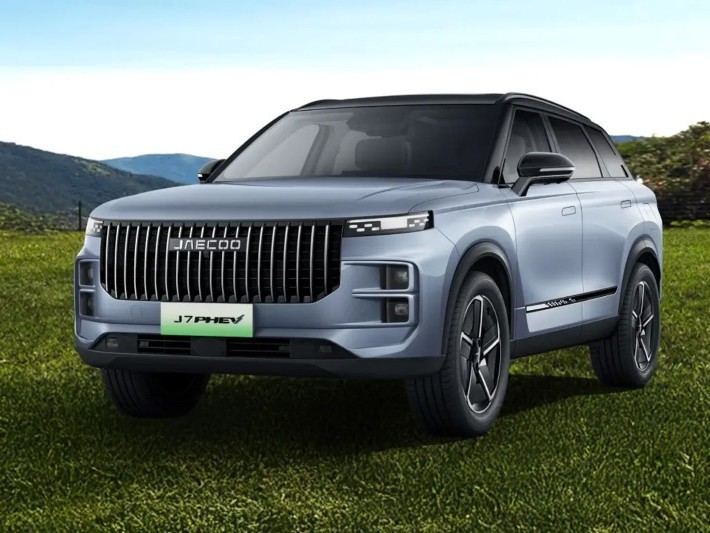
Jaecoo J7 Interior Design Unveiled: A Cabin Full of Luxury and Tech Vibes
LienJul 1, 2025

Jaecoo J7 Buyer's Guide: Models, Price & Best Pick for You!
RobertJun 10, 2025
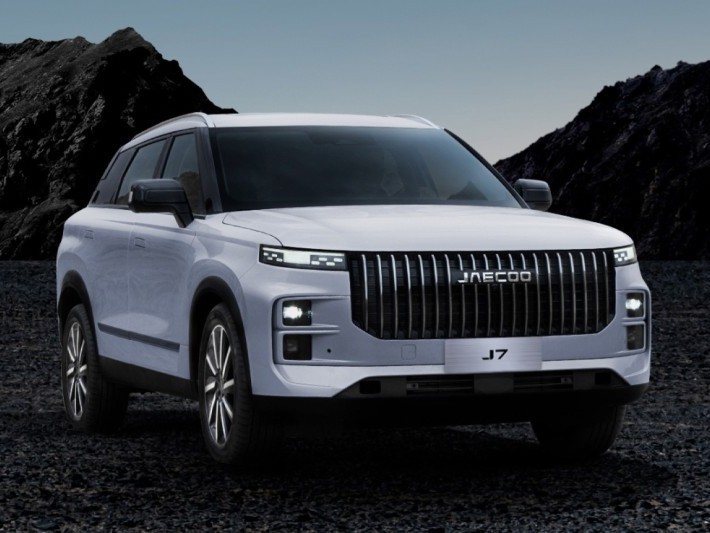
How Much Thought Went Into It? A Deep Dive Into Jaecoo J7's Design Details
MichaelApr 11, 2025
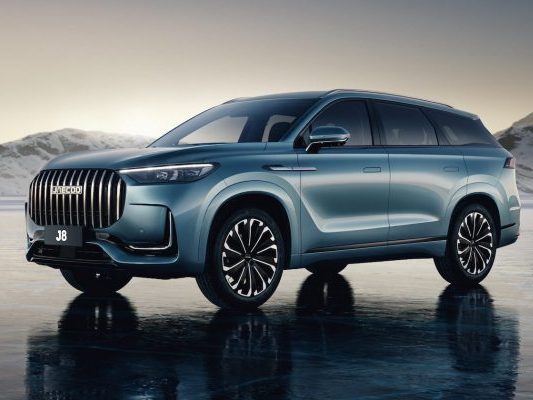
Jaecoo J8 Unveiled: Will It Continue the Glory of Jaecoo J7?
LienMar 28, 2025
View More











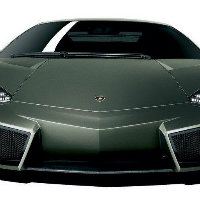
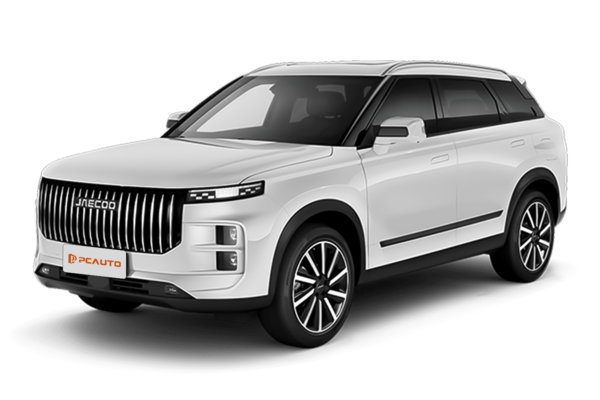
 Cars
Cars




Pros
Cons